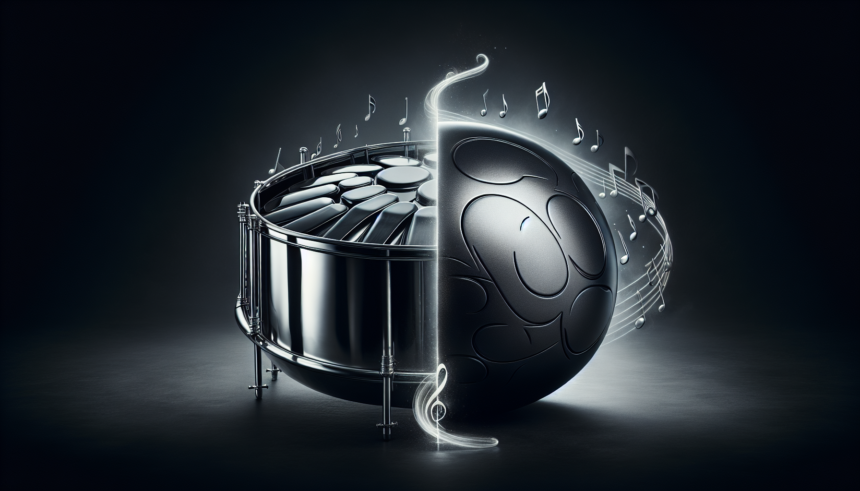The journey from steel drum to handpan represents a fascinating evolution of musical instruments, characterized by advances in sound design, craftsmanship, and cultural significance. The steel drum, also known as the steel pan, emerged in Trinidad and Tobago during the early 20th century. Over decades, it carved a unique niche in the world of music. In contrast, the handpan, a more recent invention, has quickly captivated musicians and audiences around the globe with its ethereal tones and sophisticated construction.
The Birth of the Steel Drum
The steel drum originated in Trinidad and Tobago in the 1930s and 1940s, evolving from the African-influenced tamboo bamboo bands. Early steel drums were created from discarded oil drums, creatively repurposed to produce a melody that epitomized the resilience and innovation of the local communities. These instruments were traditionally built by hand, using basic tools to hammer and shape the steel into concave surfaces with distinct pitch areas.
The initial versions of the steel drum were rudimentary, often featuring only a few notes. However, as the popularity of steel bands grew, so did the complexity and sophistication of the instruments. Tuners began experimenting with multiple notes and scales, eventually developing the fully chromatic steel pans we recognize today. The steel drum’s vibrant, resonant sound became synonymous with Caribbean music, adding a lively, percussive voice to the global musical landscape.
From Steel Drum to Handpan: Innovations in Sound and Design
The handpan, while sharing a common lineage with the steel drum, represents a leap forward in terms of design, sound, and playing technique. Invented in the early 21st century, the handpan was first introduced by Felix Rohner and Sabina Schärer of PANArt in Switzerland. Their creation, named the “Hang,” was inspired by the steel drum but designed to be played with the hands rather than with sticks.
The handpan’s construction is significantly different from that of the traditional steel drum. It features a convex, UFO-like shape, and each instrument typically includes a central note called the “Ding,” surrounded by a circle of differently tuned notes. The instrument produces a rich, harmonic sound, characterized by its warm, resonant tones that seem to float in the air.
One of the most significant advances introduced by the handpan is its dual resonance system. Unlike steel drums, which rely on a single, hammered bowl shape, handpans consist of two shells glued or welded together, allowing for intricate, sustained vibrations that result in a more meditative and enveloping sound.
Craftsmanship and Technical Mastery
The creation of a handpan is a labor-intensive process requiring considerable expertise in both metallurgy and acoustics. Crafting a handpan involves shaping, annealing, tuning, and finishing the steel. Each step must be executed with precision to ensure the resultant instrument meets the exacting standards for sound quality and durability.
The process begins with selecting high-quality steel sheets, which are then carefully shaped into the characteristic dome structure. The central Ding and surrounding tone fields are meticulously hammered and tuned to achieve the desired pitch and harmonic overtones. The tuning process is particularly crucial, as even minor imperfections can significantly impact the overall sound quality of the instrument.
In contrast, traditional steel drum making, though also requiring skill and experience, primarily focuses on crafting the instrument from industrial-grade steel barrels. Tuners use hammers and specialized tools to create note areas and refine the sound. While both instruments demand a high level of craftsmanship, the handpan’s construction process involves a more complex interplay of physics and artistry.
Cultural Significance and Popularity
Both the steel drum and handpan hold significant cultural value, albeit in different contexts. The steel drum is deeply rooted in the Caribbean, embodying the region’s vibrant musical heritage and community spirit. Steel bands are an integral part of Caribbean culture, performing at various festivals, celebrations, and events.
The handpan, on the other hand, has gained international recognition for its unique sound and aesthetic appeal. It has found a place in various musical genres, from acoustic and ambient to world music and meditation. The handpan’s versatility and serene sound have made it a favorite among street performers, professional musicians, and sound therapists alike.
Despite its relatively recent inception, the handpan has managed to capture the imagination of a global audience. Social media platforms, online tutorials, and dedicated communities have played a significant role in the instrument’s widespread popularity. Today, handpan festivals and gatherings are held worldwide, celebrating the artistry and craftsmanship behind these captivating instruments.
The Future of Percussive Melodies
The evolution from steel drum to handpan underscores the dynamic nature of musical innovation. As artisans and musicians continue to push the boundaries of sound and design, new iterations of these instruments are likely to emerge. Advances in materials science, coupled with a deeper understanding of acoustics, may pave the way for even more refined and expressive instruments.
Furthermore, the growing interest in handpans and similar instruments suggests a bright future for this unique musical form. The global community of handpan enthusiasts continues to expand, driven by a shared passion for the instrument’s enchanting sound and the craftsmanship that goes into its creation.
Conclusion
The journey from steel drum to handpan is a testament to human creativity and ingenuity in the realm of music. Both instruments, while markedly different in their construction and sound, share a common heritage rooted in the repurposing of everyday materials to produce extraordinary musical experiences. As we look to the future, the handpan represents a harmonious blend of tradition and innovation, captivating audiences with its evocative tones and intricate design. Whether you’re a seasoned musician or a curious listener, the steel drum and handpan offer a rich tapestry of sound that continues to inspire and delight across generations.
Frequently Asked Questions (FAQs)
1. What materials are used to make a handpan?
Handpans are typically made from high-quality steel sheets, which are shaped, annealed, and carefully tuned. Some handpans also utilize nitrided steel to enhance durability and sound quality.
2. How long does it take to craft a handpan?
The crafting process for a handpan can take several days to weeks, depending on the complexity of the design and the skill of the maker. Each step, from shaping and tuning to finishing, requires precision and expertise.
3. Can steel drums and handpans be played together?
Yes, steel drums and handpans can be played together, creating a unique fusion of sounds. Their distinct tonal qualities complement each other, allowing for rich, layered musical compositions.
4. What is the difference between a steel drum and a handpan?
The primary differences lie in their construction and playing technique. Steel drums are made from repurposed steel barrels and are typically played with sticks, while handpans are crafted from steel sheets and played with the hands. Handpans also feature a dual resonance system, producing a more meditative sound.
5. How do I care for and maintain my handpan?
To maintain a handpan, regularly clean it with a soft cloth and avoid exposure to extreme temperatures or humidity. Applying a thin layer of oil can help prevent rust, and storing the instrument in a padded case can protect it from physical damage.





